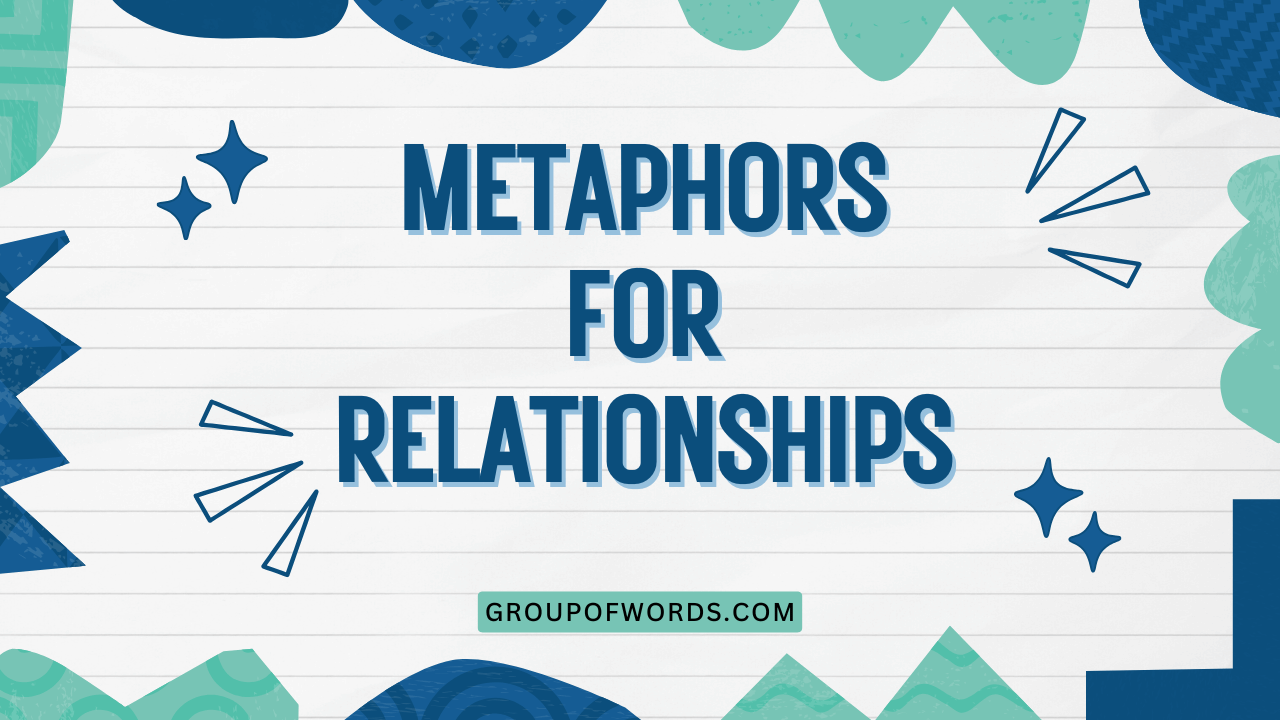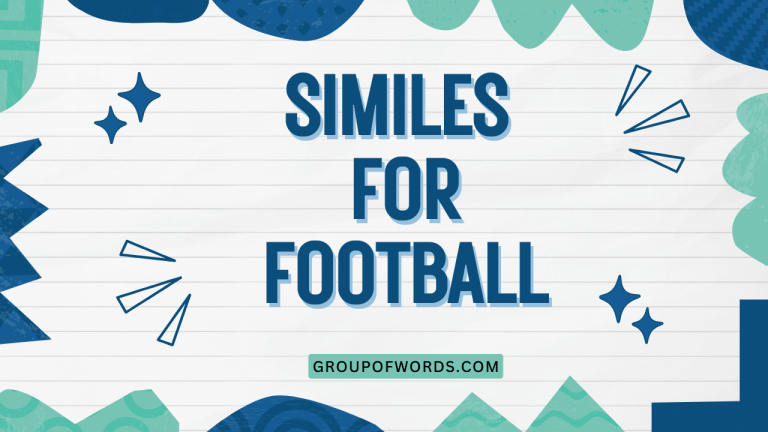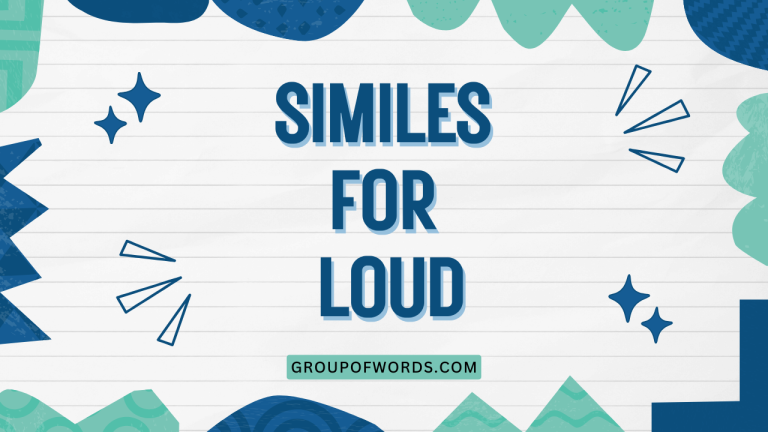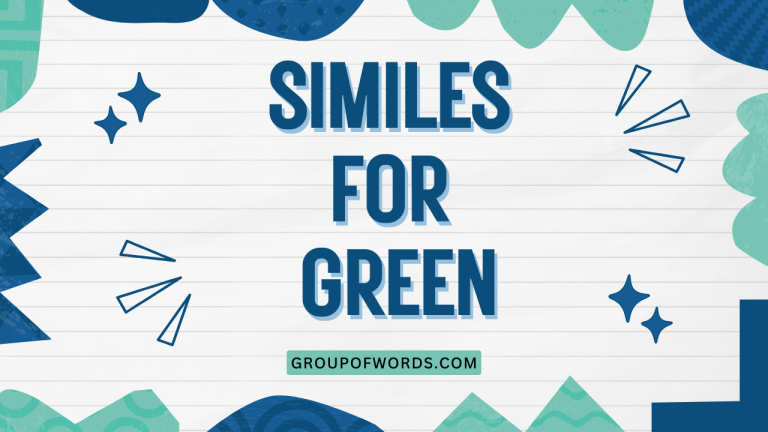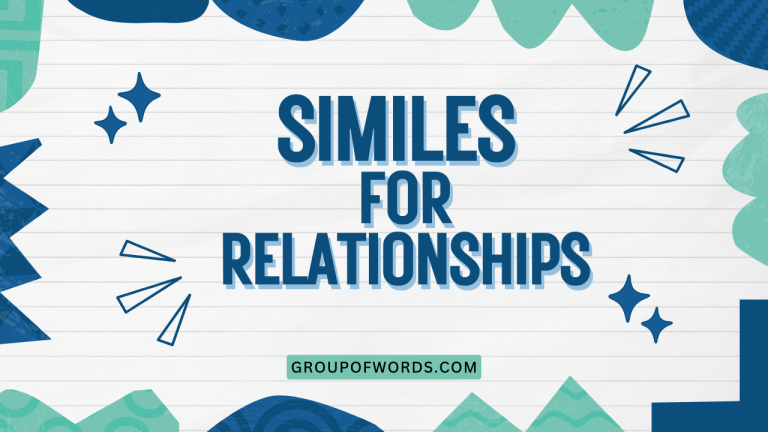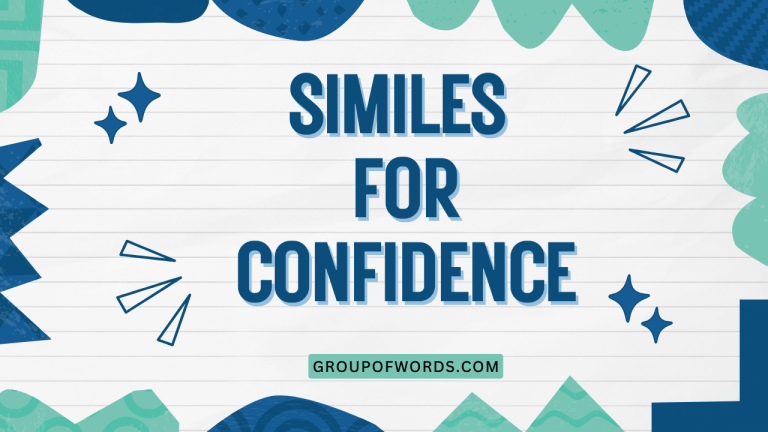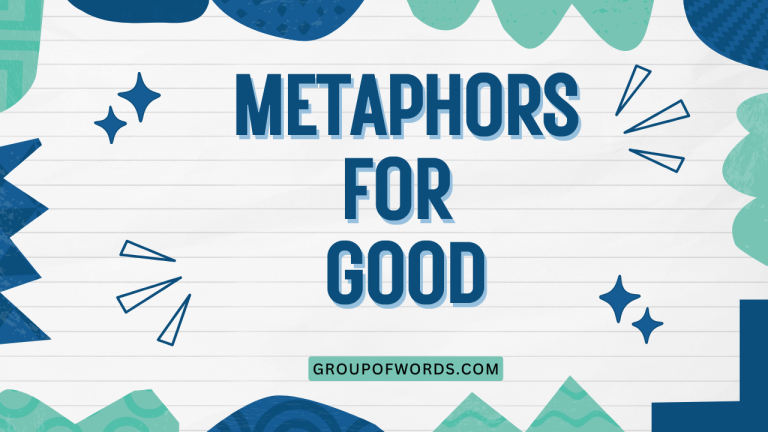Metaphors for Relationships: A Comprehensive Guide
Relationships are complex, multifaceted aspects of human life, and understanding them often requires more than just literal language. Metaphors provide a powerful tool for conceptualizing and communicating the dynamics, challenges, and joys of interpersonal connections.
This article delves into the rich world of metaphors used to describe relationships, exploring their grammatical structures, diverse categories, usage rules, and common pitfalls. Whether you’re an English language learner, a writer seeking vivid imagery, or simply someone interested in the nuances of language, this guide will equip you with the knowledge to effectively use and interpret relationship metaphors.
Table of Contents
- Introduction
- Definition of Metaphors for Relationships
- Structural Breakdown
- Types of Relationship Metaphors
- Examples of Relationship Metaphors
- Usage Rules
- Common Mistakes
- Practice Exercises
- Advanced Topics
- FAQ
- Conclusion
Definition of Metaphors for Relationships
A metaphor is a figure of speech in which a word or phrase is applied to an object or action to which it is not literally applicable. In the context of relationships, metaphors are used to describe the nature, dynamics, and progress of connections between people by comparing them to something else.
These comparisons are not meant to be taken literally but rather to provide a deeper understanding or emotional resonance. The function of relationship metaphors is to illuminate abstract concepts like love, commitment, conflict, and growth through more concrete and relatable terms.
Relationship metaphors are pervasive in everyday language, literature, and even scientific discourse. They help us conceptualize the often intangible aspects of human connections, making them easier to discuss and understand.
Consider the phrase “their relationship is a rollercoaster.” This doesn’t mean they are literally riding a rollercoaster, but it evokes the idea of ups and downs, excitement, and potential danger within their connection.
Structural Breakdown
The structure of a relationship metaphor typically involves two key elements: the tenor and the vehicle. The tenor is the subject being described (the relationship), and the vehicle is the object or concept to which it is being compared. The connection between the tenor and vehicle is established through shared characteristics or associations.
For instance, in the metaphor “their love is a battlefield,” the tenor is “their love,” and the vehicle is “a battlefield.” The shared characteristics include conflict, struggle, and the potential for casualties. The effectiveness of a metaphor lies in the strength and relevance of this connection.
Metaphors can be expressed in various grammatical forms, including:
- Noun phrases: “a marriage of convenience”
- Verb phrases: “they are drifting apart”
- Adjectival phrases: “a rocky relationship”
- Clauses: “their love is like a warm fire”
Types of Relationship Metaphors
Relationship metaphors can be categorized based on the type of vehicle used to describe the relationship. Here are some common categories:
Journey Metaphors
Journey metaphors compare a relationship to a journey, emphasizing its progress, challenges, and destinations. These metaphors often involve concepts like paths, roads, destinations, and obstacles.
Examples include: “They’re on the same path,” “Their relationship has hit a dead end,” and “They’ve reached a crossroads.”
Container Metaphors
Container metaphors depict a relationship as a container, highlighting its boundaries, contents, and capacity. These metaphors often involve concepts like boxes, rooms, and vessels.
Examples include: “They’re trapped in a toxic relationship,” “There’s no room for growth in their marriage,” and “Their love is overflowing.”
Building Metaphors
Building metaphors compare a relationship to a structure, emphasizing its foundation, construction, and stability. These metaphors often involve concepts like foundations, walls, and blueprints.
Examples include: “They’re building a strong foundation,” “Their relationship is crumbling,” and “The walls are closing in on them.”
War Metaphors
War metaphors depict a relationship as a battle, highlighting conflict, competition, and power struggles. These metaphors often involve concepts like weapons, strategies, and casualties.
Examples include: “Their relationship is a constant battle,” “They’re fighting for their marriage,” and “He surrendered to her charms.”
Natural Element Metaphors
Natural element metaphors compare a relationship to natural phenomena, highlighting its forces, cycles, and impact. These metaphors often involve concepts like fire, water, earth, and air.
Examples include: “Their love is a raging fire,” “They weathered the storm,” and “Their relationship is blossoming.”
Economic Metaphors
Economic metaphors frame a relationship in terms of costs, benefits, and investments. These metaphors often involve concepts like value, exchange, and debt.
Examples include: “He invested a lot in that relationship,” “She’s paying the price for his mistakes,” and “Their love is a priceless treasure.”
Game Metaphors
Game metaphors portray a relationship as a game, emphasizing rules, strategies, and outcomes. These metaphors often involve concepts like winning, losing, and playing field.
Examples include: “They’re playing games with each other,” “She’s always trying to win,” and “Their relationship is a power play.”
Examples of Relationship Metaphors
The following tables provide extensive examples of relationship metaphors, categorized by type.
Table 1: Journey Metaphors
This table shows examples of journey metaphors applied to relationships, emphasizing the progression, challenges, and destinations within those relationships. Each example illustrates how a relationship can be viewed as a journey with its own unique path and obstacles.
| Metaphor | Explanation |
|---|---|
| They’re on the same page. | They share the same understanding and goals. |
| They’re on the right track. | Their relationship is progressing positively. |
| Their relationship has hit a dead end. | Their relationship has no future. |
| They’ve reached a crossroads. | They need to make a crucial decision about their relationship. |
| They’re navigating rough waters. | They’re facing challenges and difficulties. |
| They’re sailing smoothly. | Their relationship is easy and harmonious. |
| They’re lost at sea. | They’re confused and uncertain about their relationship. |
| They’re climbing a mountain together. | They’re working hard to overcome challenges together. |
| They’re walking separate paths. | They’re growing apart and pursuing different goals. |
| They’re heading in different directions. | Their goals and interests are diverging. |
| This is a bumpy road. | The relationship is facing many small challenges. |
| We’ve come a long way. | The relationship has endured and developed over a significant period. |
| We are just getting started. | The relationship is new and has plenty of room to grow. |
| We need a roadmap for this. | The relationship requires careful planning and direction. |
| He’s leading her on. | He’s giving her false hope about the relationship’s future. |
| She’s dragging him down. | Her issues are negatively affecting the relationship. |
| They’re going around in circles. | They keep having the same arguments without resolution. |
| We’ve reached a turning point. | The relationship is about to undergo a significant change. |
| We need to slow down. | The relationship is moving too quickly and needs to be tempered. |
| We sped through that phase. | The relationship progressed through a particular stage rapidly. |
| The path to love is never easy. | Finding love often involves overcoming obstacles. |
| We’re hitting some roadblocks. | The relationship is encountering significant obstacles. |
| We’re on a scenic route. | The relationship is enjoyable and fulfilling. |
Table 2: Container Metaphors
This table shows container metaphors, which frame relationships as containers, emphasizing the boundaries, contents, and capacity within the relationship. These examples illustrate how feelings and dynamics can be contained or constrained within the relationship.
| Metaphor | Explanation |
|---|---|
| They’re trapped in a toxic relationship. | Their relationship is harmful and damaging. |
| There’s no room for growth in their marriage. | Their marriage is stagnant and unfulfilling. |
| Their love is overflowing. | Their love is abundant and expressive. |
| They’re building walls around their hearts. | They’re becoming emotionally distant. |
| They’re opening up to each other. | They’re becoming more vulnerable and sharing their feelings. |
| They’re keeping their feelings bottled up. | They’re suppressing their emotions. |
| Their relationship is a pressure cooker. | Tension and stress are building up. |
| They’re living in a bubble. | They’re isolated from the outside world. |
| They’re in a safe space. | They feel secure and comfortable in their relationship. |
| Their relationship is an empty shell. | Their relationship lacks substance and emotion. |
| He’s putting her on a pedestal. | He’s idealizing her and placing her in an unrealistic position. |
| She’s wearing her heart on her sleeve. | She’s openly displaying her emotions. |
| They’re building a fortress around their love. | They’re protecting their relationship from outside threats. |
| Their love is a bottomless pit. | Their love seems endless and insatiable. |
| He’s hiding his feelings in a box. | He’s suppressing his emotions and keeping them secret. |
| She’s pouring her heart out to him. | She’s expressing her deepest feelings to him. |
| They’re creating a cocoon of intimacy. | They’re fostering a close and protected relationship. |
| Their relationship is a closed book. | Their relationship is secretive and difficult to understand. |
| They’re living in separate worlds. | They have very different lives and perspectives. |
| They’re in a deep hole. | They’re in a difficult and challenging situation. |
| Their love is a wellspring of joy. | Their love brings them continuous happiness. |
| He’s building walls around his heart. | He’s becoming emotionally closed off. |
| She feels confined in the relationship. | She feels restricted and limited by the relationship. |
Table 3: Building Metaphors
This table illustrates building metaphors, which describe relationships as structures being built, emphasizing the foundation, construction, and stability. Each metaphor shows how a relationship can be seen as something that requires effort to build and maintain.
| Metaphor | Explanation |
|---|---|
| They’re building a strong foundation. | They’re establishing a solid and stable relationship. |
| Their relationship is crumbling. | Their relationship is falling apart. |
| The walls are closing in on them. | They’re feeling trapped and suffocated. |
| They’re laying the groundwork for a future together. | They’re making plans and preparations for a long-term relationship. |
| Their relationship is a house of cards. | Their relationship is fragile and easily broken. |
| They’re renovating their relationship. | They’re working to improve and revitalize their relationship. |
| Their love is the cornerstone of their family. | Their love is the most important and foundational element of their family. |
| They’re shoring up their relationship. | They’re strengthening their relationship to withstand challenges. |
| Their relationship is a solid structure. | Their relationship is strong and dependable. |
| They’re tearing down walls between them. | They’re breaking down barriers and improving communication. |
| They are the architects of their own happiness. | They are responsible for creating their own joy and fulfillment in the relationship. |
| Their love is the bedrock of their lives. | Their love is the fundamental and unshakeable basis of their lives. |
| They’re constructing a life together. | They’re building a shared future and lifestyle. |
| Their relationship is a work in progress. | Their relationship is constantly evolving and improving. |
| He’s the scaffolding that supports her. | He provides her with strength and stability. |
| She’s the glue that holds them together. | She’s the one who maintains and strengthens their bond. |
| They’re building bridges instead of walls. | They’re fostering connection and understanding. |
| Their relationship is a fixer-upper. | Their relationship needs a lot of work to improve. |
| They’re laying the foundation for a family. | They’re preparing to have children and create a family unit. |
| They’re reinforcing their bond. | They’re strengthening their connection and commitment. |
| Their love is the keystone of their lives. | Their love is the central and essential element of their lives. |
| They’re building a strong emotional infrastructure. | They’re creating a solid basis for emotional support and stability. |
| Their relationship is a sturdy edifice. | Their relationship is strong, enduring, and well-constructed. |
Table 4: War Metaphors
This table presents war metaphors, which depict relationships as battles, highlighting conflict, competition, and power struggles. The examples illustrate how relationships can sometimes be perceived as adversarial or combative.
| Metaphor | Explanation |
|---|---|
| Their relationship is a constant battle. | They’re always arguing and fighting. |
| They’re fighting for their marriage. | They’re working hard to save their marriage. |
| He surrendered to her charms. | He gave in to her attractiveness and influence. |
| They’re locked in a power struggle. | They’re competing for control and dominance. |
| She’s giving him the silent treatment. | She’s refusing to speak to him as a form of punishment. |
| They’re drawing battle lines. | They’re defining their positions and preparing for conflict. |
| He’s using emotional blackmail. | He’s manipulating her emotions to get what he wants. |
| She’s playing hard to get. | She’s pretending to be uninterested to increase her appeal. |
| They’re engaged in a war of words. | They’re arguing vehemently and using hurtful language. |
| Their relationship is a minefield. | Their relationship is full of hidden dangers and potential conflicts. |
| He’s dodging her questions. | He’s avoiding answering her questions directly. |
| She’s attacking his character. | She’s criticizing his personality and values. |
| They’re taking shots at each other. | They’re making sarcastic and hurtful remarks. |
| Their love is a casualty of war. | Their love has been destroyed by conflict and hardship. |
| He’s building up his defenses. | He’s protecting himself from emotional vulnerability. |
| She’s launching a preemptive strike. | She’s acting defensively to prevent potential harm. |
| They’re negotiating a truce. | They’re trying to reach a temporary agreement to stop fighting. |
| Their relationship is a battleground. | Their relationship is a site of constant conflict and struggle. |
| He’s holding her hostage with his guilt. | He’s manipulating her with guilt to control her actions. |
| She’s waging a campaign for his attention. | She’s actively trying to attract his attention and affection. |
| Their love is collateral damage. | Their love has been unintentionally harmed in a larger conflict. |
| They’re fighting tooth and nail. | They’re fighting fiercely and relentlessly. |
| They’re at each other’s throats. | They’re in intense and bitter conflict. |
Table 5: Natural Element Metaphors
This table provides examples of natural element metaphors, which compare relationships to natural phenomena. Each example in the table uses elements like fire, water, earth, and air to illustrate the forces, cycles, and impact within the relationships.
| Metaphor | Explanation |
|---|---|
| Their love is a raging fire. | Their love is passionate and intense. |
| They weathered the storm. | They survived a difficult period in their relationship. |
| Their relationship is blossoming. | Their relationship is growing and thriving. |
| Their love is as deep as the ocean. | Their love is profound and boundless. |
| They’re drifting like clouds. | They’re moving aimlessly and without direction. |
| Their relationship is grounded. | Their relationship is stable and secure. |
| Their love is a gentle breeze. | Their love is calming and refreshing. |
| They’re a breath of fresh air. | They bring new energy and excitement to the relationship. |
| Their relationship is rocky. | Their relationship is unstable and difficult. |
| They’re in the eye of the storm. | They’re experiencing a brief period of calm amidst chaos. |
| Their love is a desert. | Their love is barren and lacking in affection. |
| He’s the sun in her sky. | He brings her happiness and warmth. |
| She’s his anchor in the storm. | She provides him with stability and support during difficult times. |
| Their love is a volcano waiting to erupt. | Their love is filled with suppressed emotions that could explode. |
| He’s a tidal wave of emotion. | He’s overwhelmed with intense feelings. |
| She’s a gentle rain. | She’s nurturing and soothing. |
| Their relationship is a fertile ground for growth. | Their relationship provides an environment conducive to personal development. |
| They’re caught in a whirlwind romance. | They’re in a passionate and fast-moving relationship. |
| Their love is a mountain to climb. | Their love requires effort and perseverance. |
| They’re weathering the seasons of life together. | They’re enduring the various challenges and changes that life brings. |
| Their love is a beacon in the night. | Their love provides guidance and hope in difficult times. |
| They’re like oil and water. | They don’t mix well and have conflicting personalities. |
| Their relationship is a fertile garden. | Their relationship is thriving and full of potential. |
Usage Rules
Using metaphors effectively requires careful consideration of the context and audience. Here are some key usage rules:
- Relevance: Choose metaphors that are relevant to the relationship being described and the audience’s understanding.
- Consistency: Maintain consistency in the metaphor throughout the description. Avoid mixing metaphors that create confusing or contradictory images.
- Clarity: Ensure that the metaphor is clear and easily understood. Avoid obscure or overly complex metaphors that may confuse the audience.
- Originality: While common metaphors can be effective, consider using original metaphors to create a more vivid and memorable impression.
- Sensitivity: Be mindful of the emotional impact of the metaphor. Avoid using metaphors that may be offensive or insensitive.
For example, instead of saying “Their relationship is a rollercoaster in a jungle,” which mixes two different metaphors and creates a confusing image, it’s better to stick to one consistent metaphor, such as “Their relationship is a rollercoaster” or “Their relationship is a jungle.”
Common Mistakes
Here are some common mistakes to avoid when using relationship metaphors:
- Mixing metaphors: Combining unrelated metaphors that create confusing images.
- Incorrect: “Their relationship is a rollercoaster in a jungle.”
- Correct: “Their relationship is a rollercoaster.”
- Clichés: Overusing tired and unoriginal metaphors that have lost their impact.
- Incorrect: “Their love is a burning flame.”
- Correct: “Their love is an unquenchable fire.”
- Inappropriate metaphors: Using metaphors that are offensive or insensitive.
- Incorrect: “Their relationship is a prison.” (Unless describing a truly oppressive situation)
- Correct: “Their relationship feels constricting.”
- Overly complex metaphors: Using metaphors that are too abstract or difficult to understand.
- Incorrect: “Their relationship is a fractal iteration of quantum entanglement.”
- Correct: “Their relationship is deeply interconnected.”
Practice Exercises
Exercise 1: Identify the Metaphor
Identify the metaphor in each sentence and explain its meaning.
| Sentence | Answer |
|---|---|
| Their marriage is a sinking ship. | Metaphor: sinking ship. Meaning: Their marriage is failing and in danger of ending. |
| He’s the anchor in her life. | Metaphor: anchor. Meaning: He provides her with stability and support. |
| They’re building bridges, not walls. | Metaphor: building bridges/walls. Meaning: They are fostering connection and understanding, not creating barriers. |
| Their love is a battlefield. | Metaphor: battlefield. Meaning: Their relationship is full of conflict and struggle. |
| She’s wearing her heart on her sleeve. | Metaphor: wearing her heart on her sleeve. Meaning: She’s openly displaying her emotions. |
| Their relationship is a pressure cooker. | Metaphor: pressure cooker. Meaning: Tension and stress are building up in their relationship. |
| They are walking on eggshells around each other. | Metaphor: walking on eggshells. Meaning: They are being very careful not to upset each other. |
| Their relationship is like a well-oiled machine. | Metaphor: well-oiled machine. Meaning: Their relationship is functioning smoothly and efficiently. |
| He is her rock. | Metaphor: rock. Meaning: He is her source of strength and stability. |
| She is the light of his life. | Metaphor: light. Meaning: She brings him joy and happiness. |
Exercise 2: Complete the Metaphor
Complete each sentence with an appropriate metaphor.
| Sentence | Answer |
|---|---|
| Their relationship is like a __________ because it has its ups and downs. | Answer: rollercoaster |
| He feels like he’s __________ in their relationship. | Answer: drowning |
| She’s __________ him with her constant criticism. | Answer: tearing down |
| Their love is a __________ that keeps them warm at night. | Answer: fire |
| They’re __________ a strong foundation for their future together. | Answer: building |
| Their relationship is a __________ because they are always arguing. | Answer: war |
| She’s __________ in his eyes. | Answer: reflected |
| Their love is a __________ that needs to be nurtured. | Answer: garden |
| He’s __________ her with his lies. | Answer: poisoning |
| Their relationship is like a __________ that needs constant attention. | Answer: plant |
Exercise 3: Create Your Own Metaphor
Create your own unique metaphor to describe the following relationships:
| Relationship | Your Metaphor | Explanation |
|---|---|---|
| A long-distance relationship | Their love is a satellite connection. | Even though they are far apart, they maintain a strong connection through technology. |
| A newlywed couple | They are two seedlings planted in the same pot. | They are starting their life together and growing together in the same environment. |
| A relationship after a big fight | Their relationship is a cracked vase glued back together. | It may still hold water, but the cracks are still visible reminding them of the incident. |
| A one-sided relationship | Their relationship is a seesaw stuck on one side. | One person is doing all the work, while the other is just along for the ride. |
| A couple that has been together for 50 years | Their love is an ancient tree with deep roots. | They have weathered many storms and grown stronger over time. |
Advanced Topics
For advanced learners, exploring the conceptual metaphors theory can provide a deeper understanding of how metaphors shape our thinking about relationships. This theory, developed by George Lakoff and Mark Johnson, suggests that our understanding of abstract concepts like relationships is based on underlying metaphorical structures.
For example, the metaphor “LOVE IS A JOURNEY” influences how we perceive the progress, obstacles, and destinations in a romantic relationship.
Another advanced topic is the use of extended metaphors, where a single metaphor is developed and elaborated throughout a text. This technique can create a powerful and cohesive image, but it requires careful planning and execution.
FAQ
- What is the difference between a metaphor and a simile?
A metaphor directly equates two unlike things, while a simile uses “like” or “as” to make a comparison. For example, “Their love is a fire” is a metaphor, while “Their love is like a fire” is a simile. Metaphors are generally considered stronger and more direct.
- Why are metaphors useful in describing relationships?
Metaphors help us understand abstract and complex aspects of relationships by relating them to more concrete and familiar concepts. They add depth, emotion, and imagery to our descriptions, making them more engaging and meaningful.
- How can I avoid using clichés in my relationship metaphors?
To avoid clichés, try to think of original and unexpected comparisons. Consider the specific qualities of the relationship you’re describing and look for unique ways to express them. Brainstorming and using a thesaurus can also help.
- Can metaphors be harmful in relationships?
Yes, if used insensitively or inaccurately. For example, using war metaphors excessively can create a negative and combative atmosphere. Choose metaphors that reflect the true nature of the relationship and promote understanding.
- How do cultural differences affect the interpretation of relationship metaphors?
Cultural backgrounds can influence how metaphors are understood and perceived. Some metaphors may be more common or meaningful in certain cultures than others. Be mindful of cultural context when using and interpreting metaphors.
- What is the conceptual metaphor theory?
The conceptual metaphor theory, proposed by George Lakoff and Mark Johnson, suggests that our understanding of abstract concepts is based on underlying metaphorical structures. These structures shape how we think, reason, and communicate about these concepts.
- How can I improve my ability to understand and use relationship metaphors?
Read widely, pay attention to how others use metaphors, and practice creating your own. Consider the context, audience, and desired effect when choosing and using metaphors. Reflect on how different metaphors shape your understanding of relationships.
- Are there specific types of relationships that lend themselves better to certain metaphors?
Yes, different relationship dynamics may be better suited to certain metaphors. For example, a tumultuous relationship might be well-described using war or storm metaphors, while a stable and nurturing relationship might be better described using building or garden metaphors.
Conclusion
Mastering the art of using metaphors for relationships enhances your ability to express complex emotions and dynamics with clarity and creativity. By understanding the different types of metaphors, their structural elements, and the rules governing their usage, you can communicate more effectively and connect with others on a deeper level.
Remember to choose metaphors that are relevant, consistent, and sensitive to the context and audience. Avoid common mistakes like mixing metaphors and using clichés.
With practice and attention to detail, you can unlock the power of metaphors to illuminate the intricate world of human connections.
Continue to explore the diverse range of metaphors used in literature, everyday conversation, and even academic discussions. Pay attention to how these metaphors shape your own understanding of relationships and how you can use them to enrich your communication.
